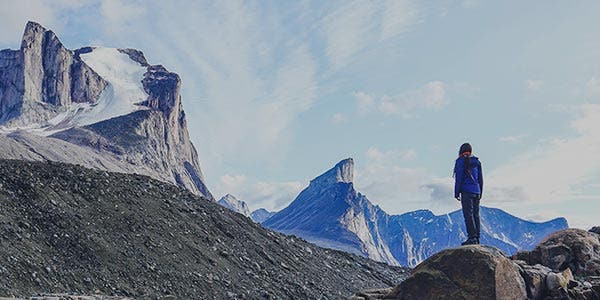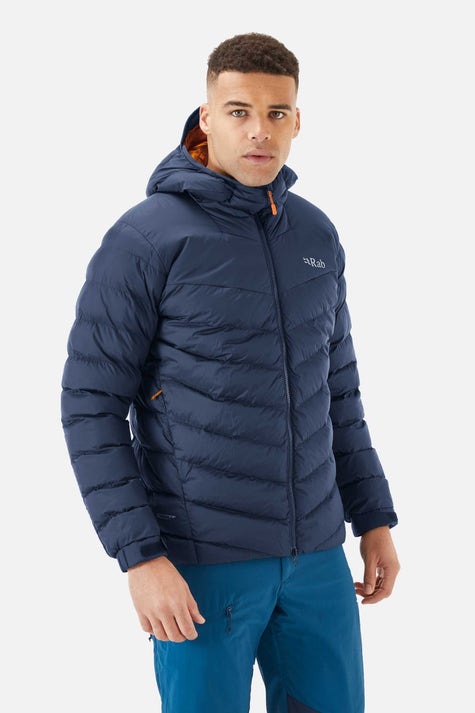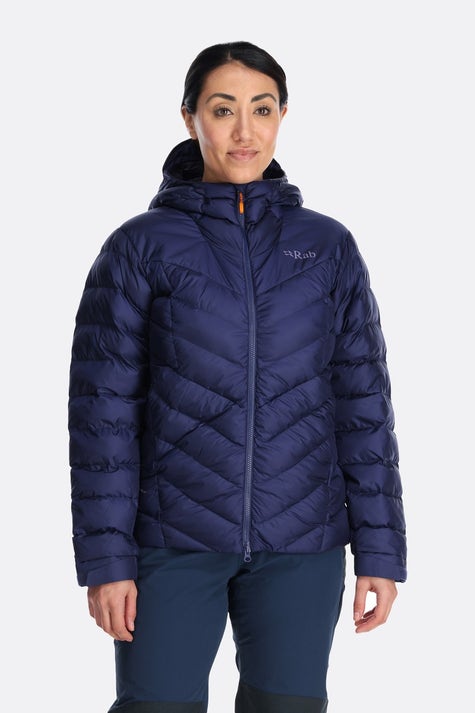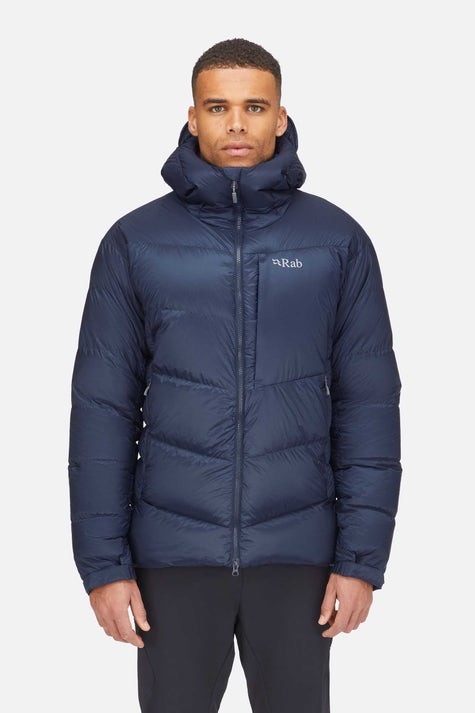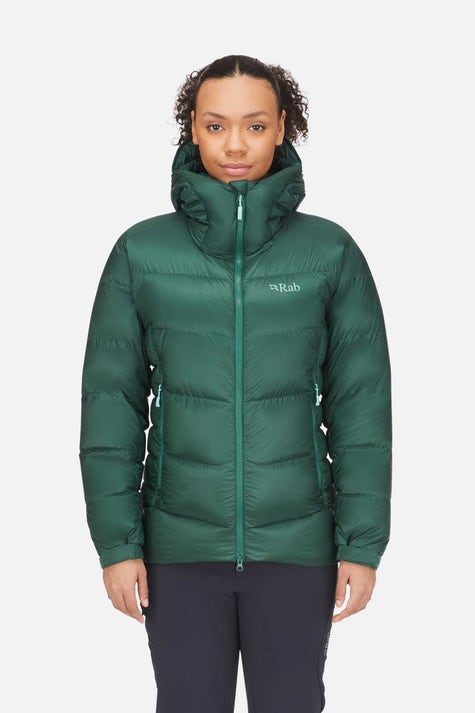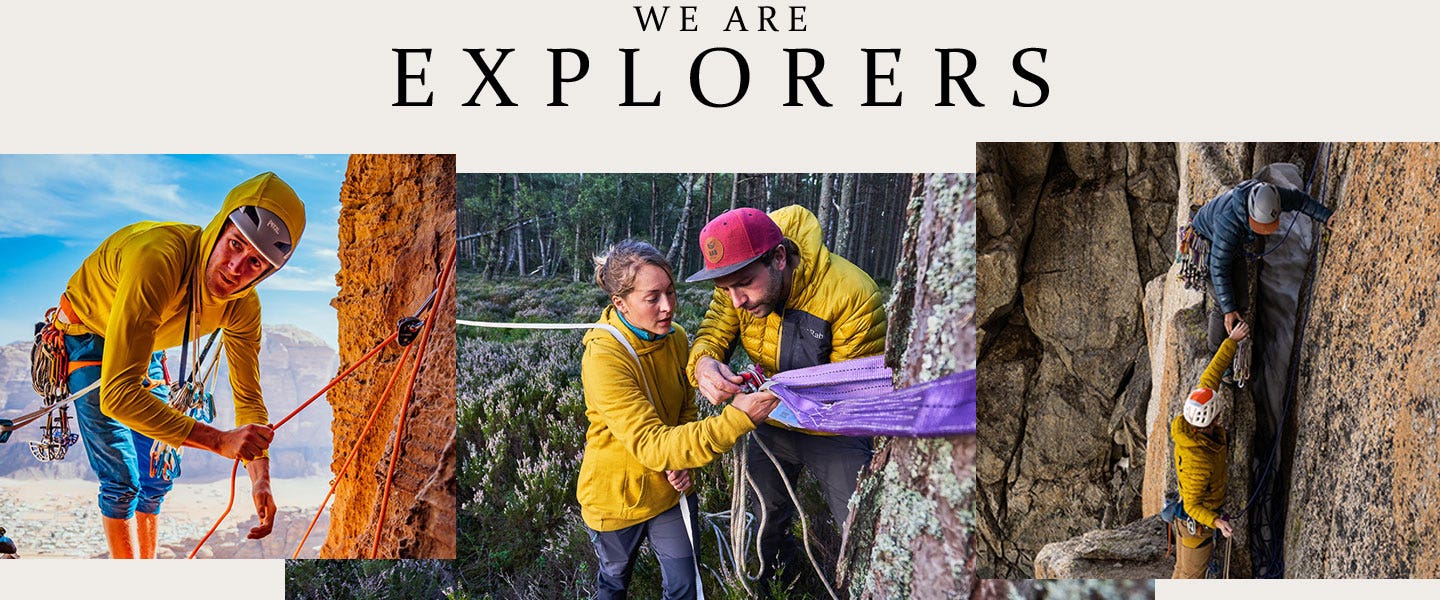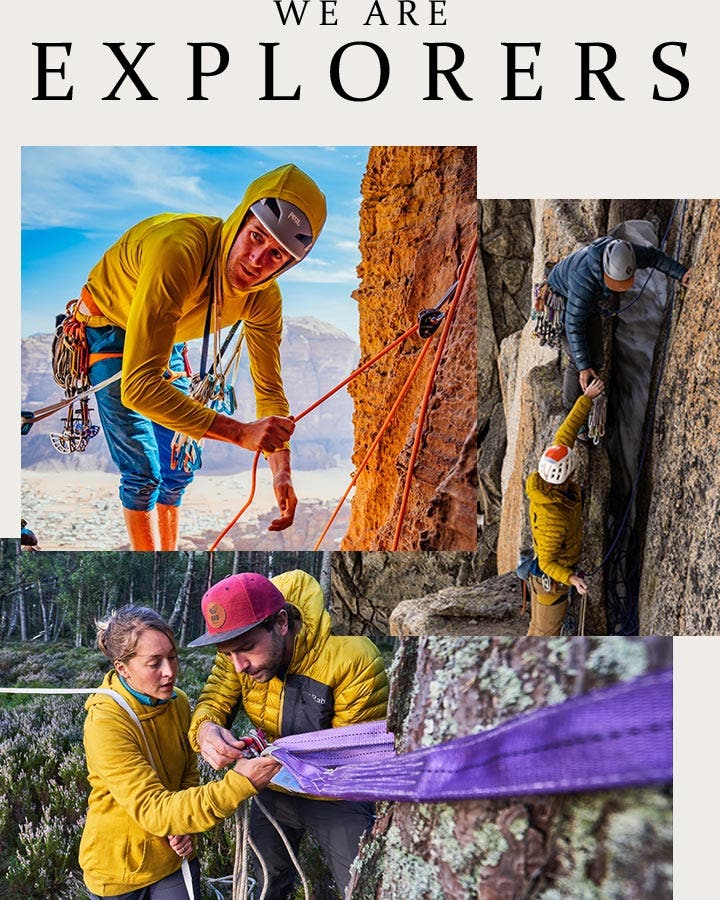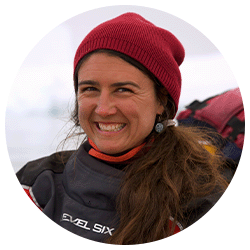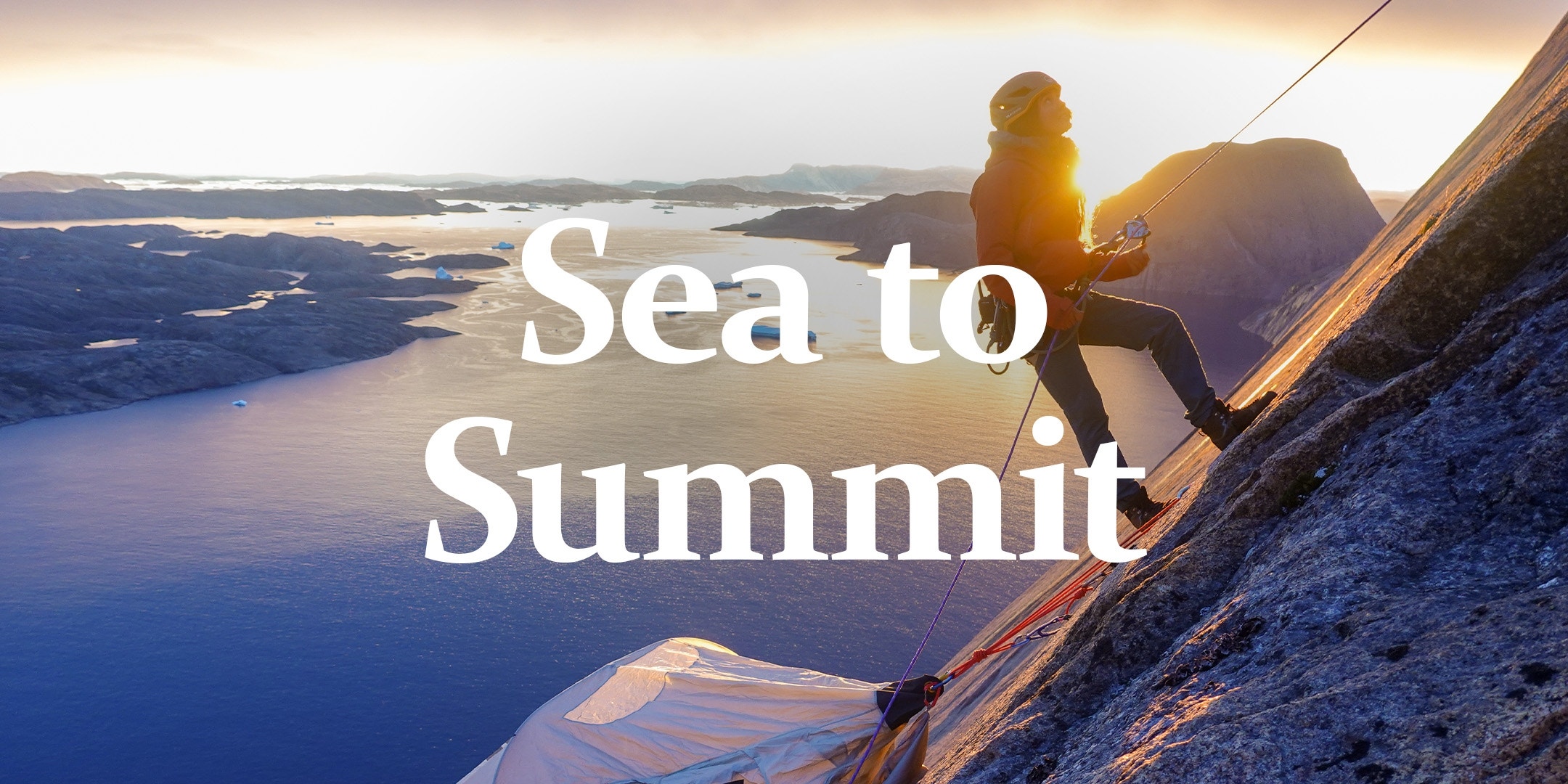
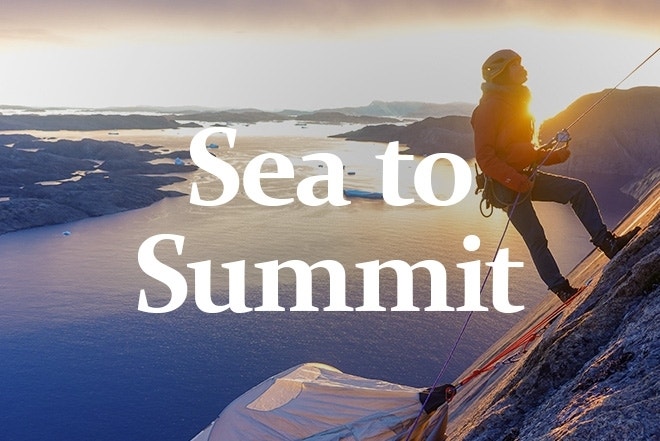
You never quite know what to expect, that’s part of the fun! We spent the better part of a year planning and preparing for the big trip to Greenland. Jacob researched the area extensively and compiled a PDF guide book of every route established (which was not many!) that he could find.
We reached out to sea kayakers who had been to the area to learn about the local ocean behaviours. We spent hours pouring over Google Earth; our geologist friend sourced us an in-depth geological map so we could compare and predict rock quality on a large scale. We found historical satellite imagery that showed us when the ice break would happen, as this would dictate our start date. Eventually, we came up with an objective, a dream route.
But there were still a lot of steps to making that dream a reality. The journey would involve a 20km overland pass. We needed to find kayaks that were sea-worthy but possible to pack up and carry. We needed to find a shipping company that would oversee transport of all of our food and equipment from Squamish, Canada, to Uummannaq, Greenland. And perhaps above all, we needed to find a team who was psyched, worked well together and was up for the challenge.
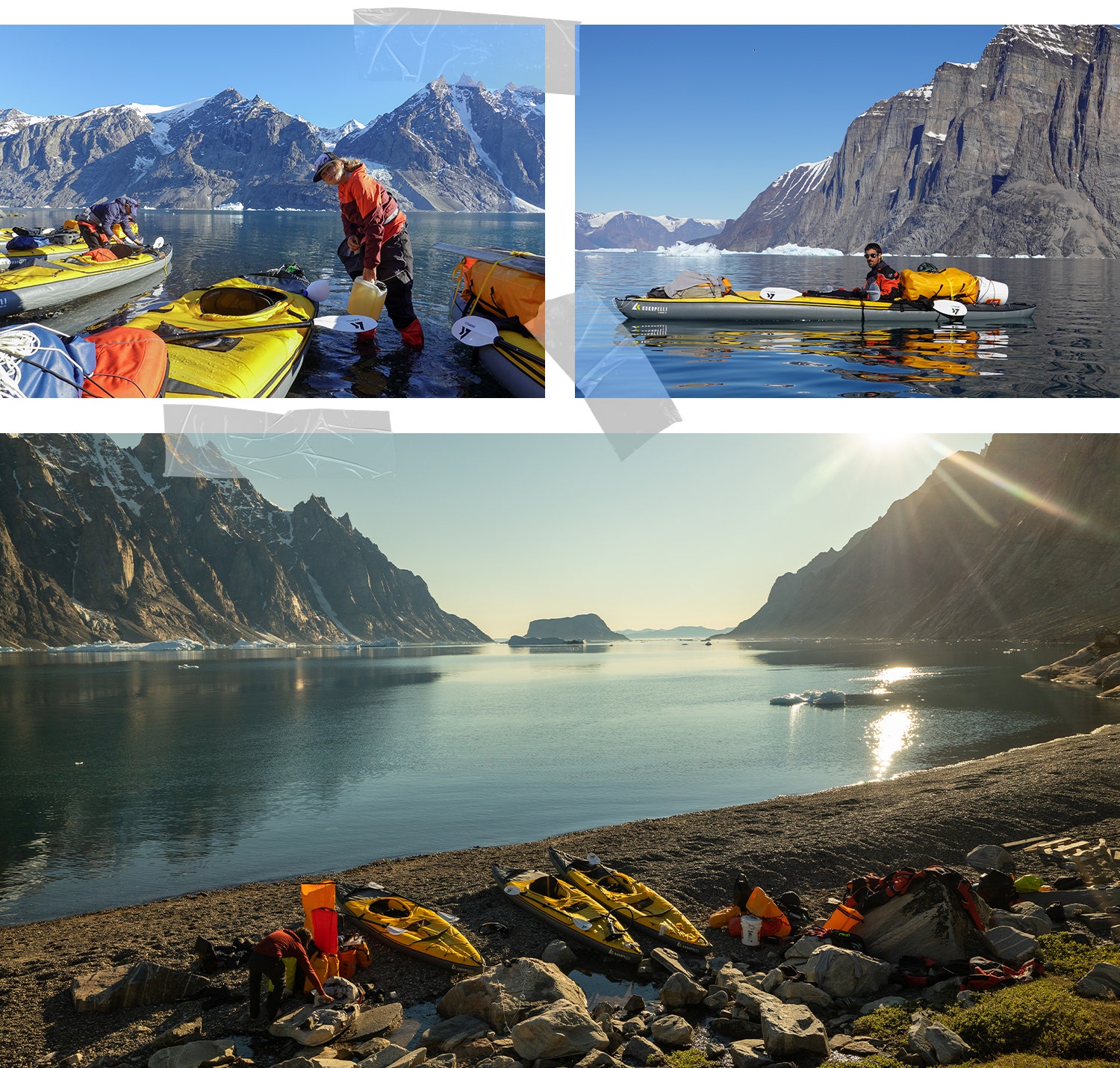

PREPARATION
The moment when you’ve done as much preparation as you can possibly do, and now you have to move forward with confidence that you’ll figure out the rest as it comes. I breathe a huge sigh of relief as we wave goodbye to the local Inuit fishermen as they drive off in their boats, leaving us alone on the pebbled beach on the edge of the Arctic ocean.
We’re in it now guys! Only us, the rocks, the waves, the seals and the birds, the caribou and the muskox (if we’re lucky) and the polar bears (if we aren’t so lucky). With the relief; however, also comes a curiosity-driven adrenaline rush in hoping that we’ve prepared sufficiently for what’s to come!
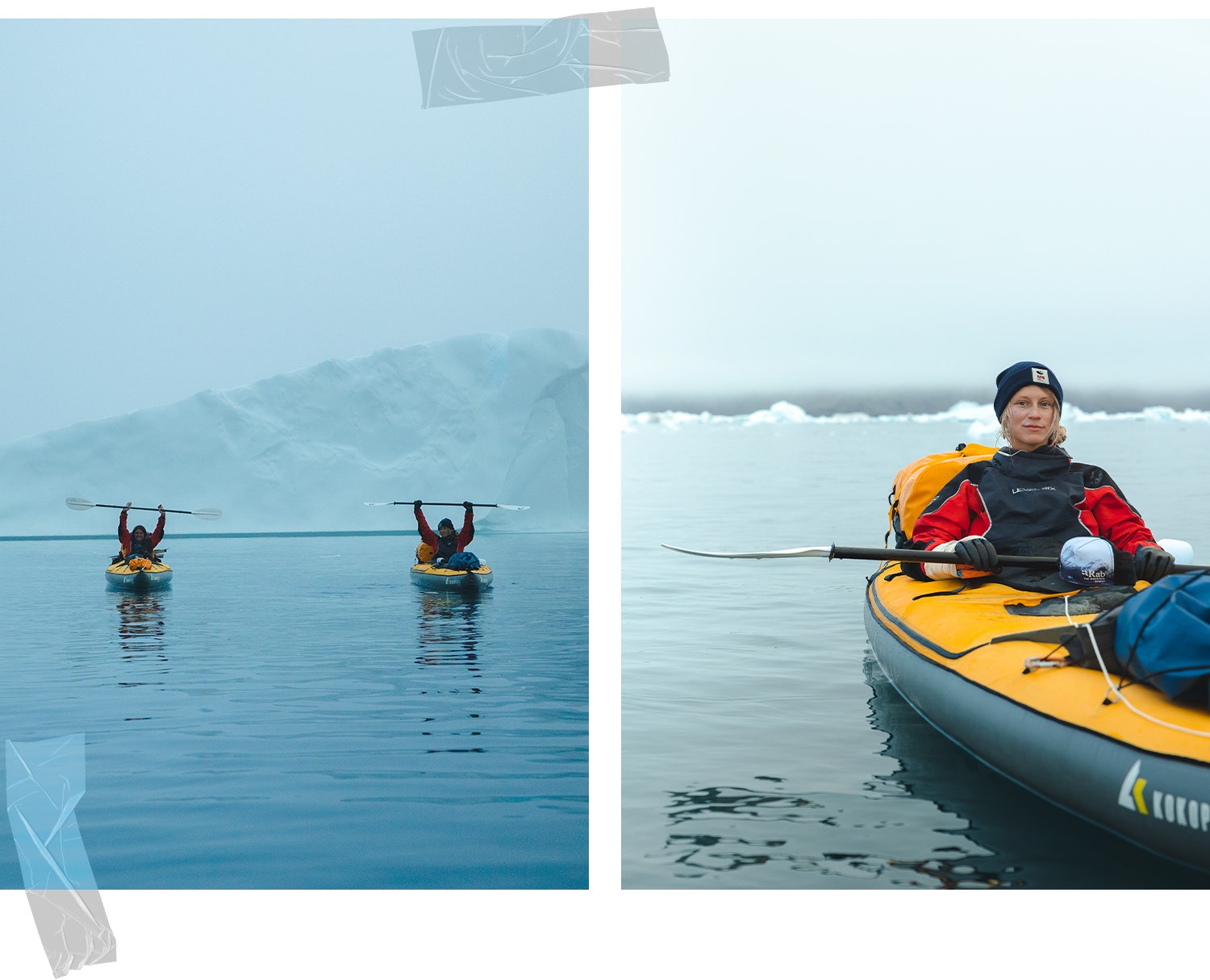

FIELD REPAIRS
At the end of the first day, we pulled up onto shore only to discover huge rips along the pontoons of two of the kayaks! I felt a pit of worry clench tightly in my stomach. Was the trip going to be over before it had even begun?
We knew we were pushing the limits of what these boats were built for, and upon closer inspection we realized that the D-rings we were using to strap heavy packs onto the decks were probably not built to hold tension like that. Fortunate for us, both Zack and Angela had experience with pack-raft manufacturing and they led the charge in a marathon of meticulously sewing and gluing.
Two days later, we nervously pumped up the pontoons and, with fingers crossed, set off onto the ocean again! (This time being sure to attach the packs with straps going all the way around the boats, instead of using the D-rings.) It worked!
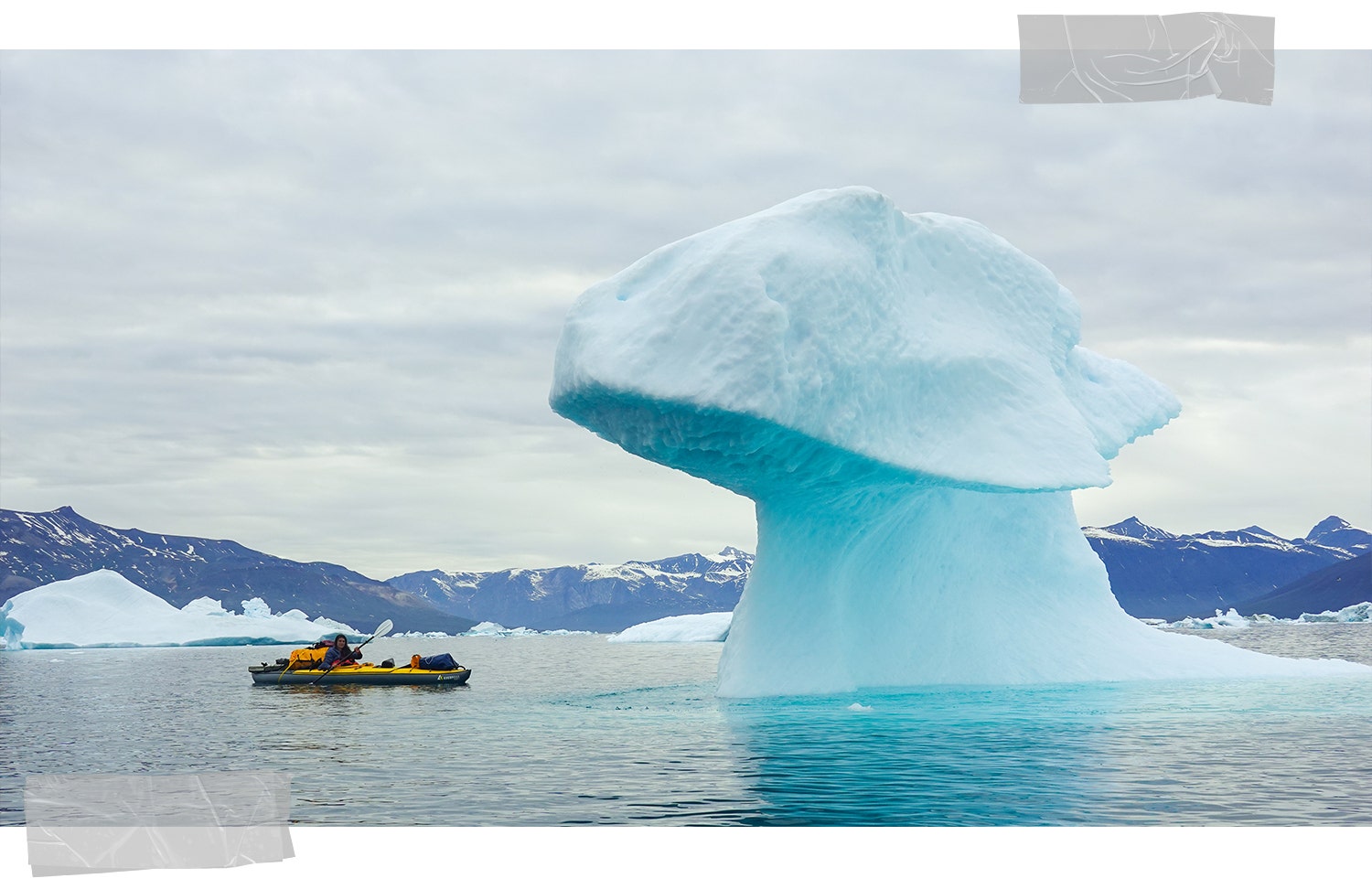

RHYTHM OF THE TIDES
The forces of nature are not to be taken lightly. We are but small, insignificant beings, lost in a huge and unforgiving landscape. The wind doesn’t care if we are working as hard as we can, yet making no distance. The tides don’t care that the favourable flow is happening in the middle of the night when our bodies wish to be blissfully asleep. The snow storm doesn’t even know that we are strapped to the side of a cliff in a tiny fabric tent!
We knew our over-loaded inflatables wouldn’t be setting any Arctic speed records. The truth is, progress was painfully slow. Every day from early breakfast to late dinner, we paddled constantly, and still we barely kept the pace we needed.
We tuned in to the rhythm of the tides, making sure we were always paddling over peak flow in the proper direction, especially in the long fjords. We became nocturnal, because the wind was calmer at night — except on days when the winds were in our favour, we would pull out the big tarp and set sail! We slept when we could, and the rest of the time we paddled, on nature’s schedule, when she permitted us safe and efficient passage.
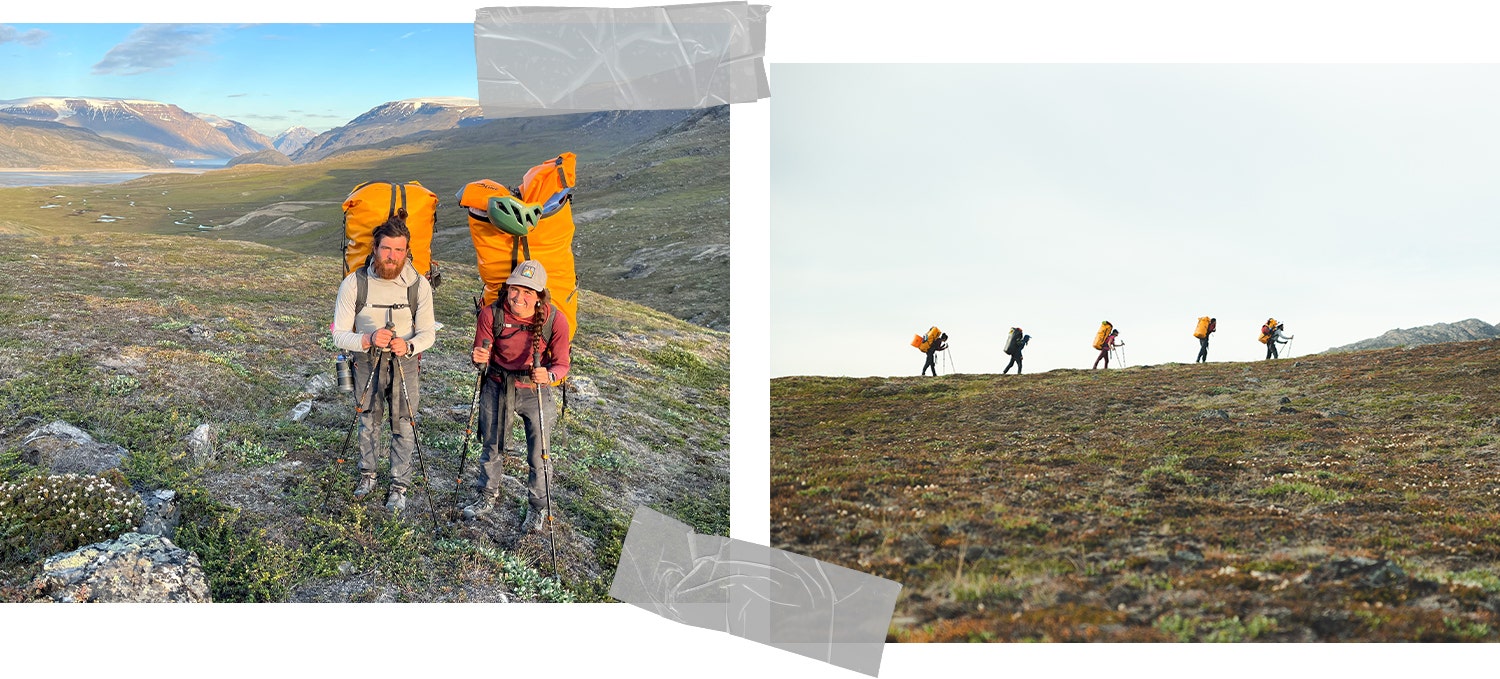

THE TREK
The 20km overland pass was probably the biggest question mark. Would we be able to get ourselves and our literal tonne of food and gear across in a reasonable timeframe? We’d studied the terrain on Google Earth, but could find no information about anyone traveling through, although it’s likely generations of Inuit have used this pass as a winter route sheltered from the open coastline. We could tell that the macro elevation gradient seemed reasonable, but would we be prancing on flat rocks or trudging though muddy swamps?
Well, our first day of load carrying brought both good news and bad news. The good: the terrain was surprisingly easy to navigate! The bad: it was going to take three back-breaking loads each, meaning we would be doing roughly 100km of walking in total. Slowly and surely, we plotted our way across the land, following signs of a migrating caribou herd and kindly greeted once by some scary-looking and very hairy, horned muskox.
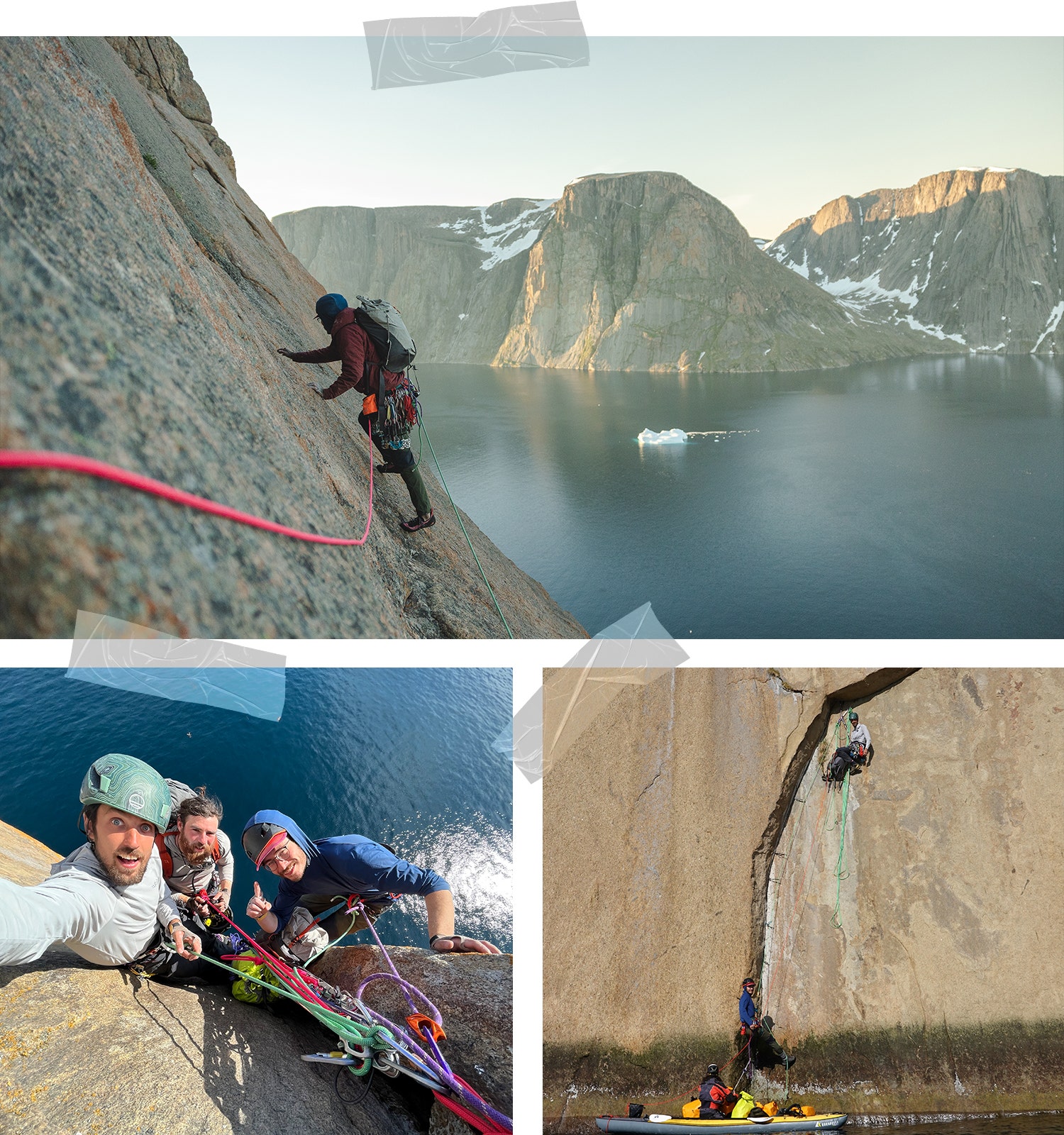

FROM SEA TO SUMMIT
We continued the journey of several more days' paddle. We rounded a point and froze awe-struck at the bright red cliff rising straight 500m out of the ocean. I’ve never seen a rock so majestic, so compelling. It’s no wonder the few teams of climbers who had explored this area by sailboat had already established some lines on this face, known as “Red Wall” by climbers, but “Agparssuit” by the locals, which translates to “Where the Gulls Stand in a Row.”
The Inuit name suggests that there may be some nesting birds, but never could we have imagined just how many birds could fit on a single cliff — I kid you not, there were thousands! Thousands of Northern Fulmars and Black Guillemots (aka the Atlantic Puffin that look like mini penguins), squawking and pooping and, sure enough, standing in rows watching us as we paddled past in our weird yellow boats.
We gawked too, at the phenomenal quality of the rock! We scoped some lines and the next day came back ready to climb. The first pitch was in typical Greenland style: belaying directly out of the kayak and then hauling the boat up to the first anchor!
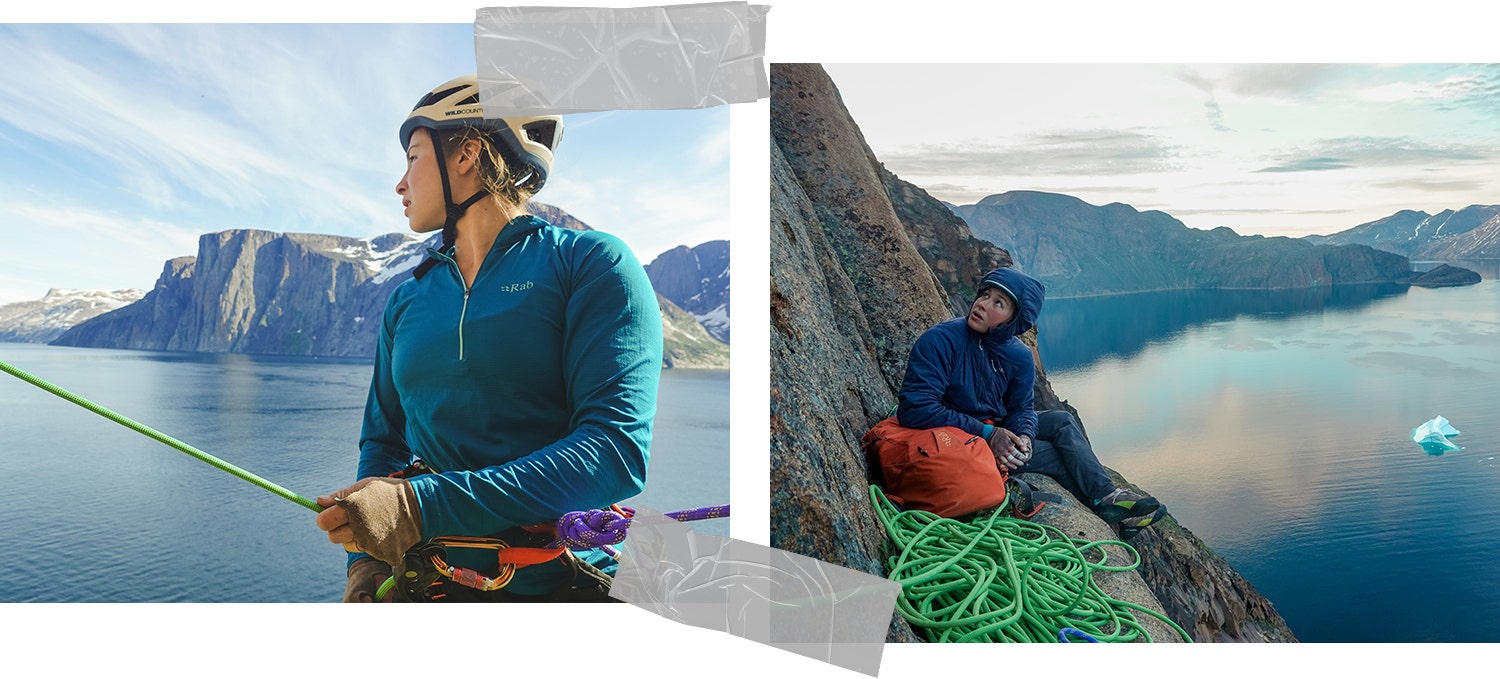

THE MIDNIGHT SUN
Summertime in Greenland the sun never sets. Instead it just circles the sky, east in the morning, south at midday, west in the afternoon and north at night. The 24hour schedule that rules the lives of most human populations, loses significance. When kayaking, we plan our days with the winds and the tides. When climbing, the concept of getting be-nighted doesn’t really hold the same power.
When Kelsey, Angela and I set off from the base of Red Wall on a new unclimbed line, we didn’t know how long the mission would take. The wall was confusing, three big faces stacked vertically and separated by two grassy ledges. Each face had multiple possibilities of lines to consider. Route finding was going to be tough, would we manage to find a path through the vertical maze to the summit? Or would it blank out and dead end us?
By the time we’d paddled over from camp and stashed the kayaks at the base it was already late in the day. We proceeded to climb all afternoon, digging dirt from cracks with an ice axe, placing breaks in seams… We climbed into the night, arriving at the first ledge in the wee hours of the morning. The sun was running in circles, but the cliff faced east, which meant morning sun. We filled our water bottles at a drip and then drifted off into an uncomfortable but warm nap.
We woke up at some time (does it matter when?) and began to climb. Through the second night, but who’s counting? The sun went in circles. We climbed higher, now bundled in our biggest puffies. We discussed route options, made decisions, savoured our last energy bars…. The sun poked around the corner, making us cozy but drowsy. We kept climbing. The path kept connecting. Would we make it?
The view from the summit took our eyes out into the vastness of the iceberg-laden Arctic Ocean. We named our route “Time is a Construct.”
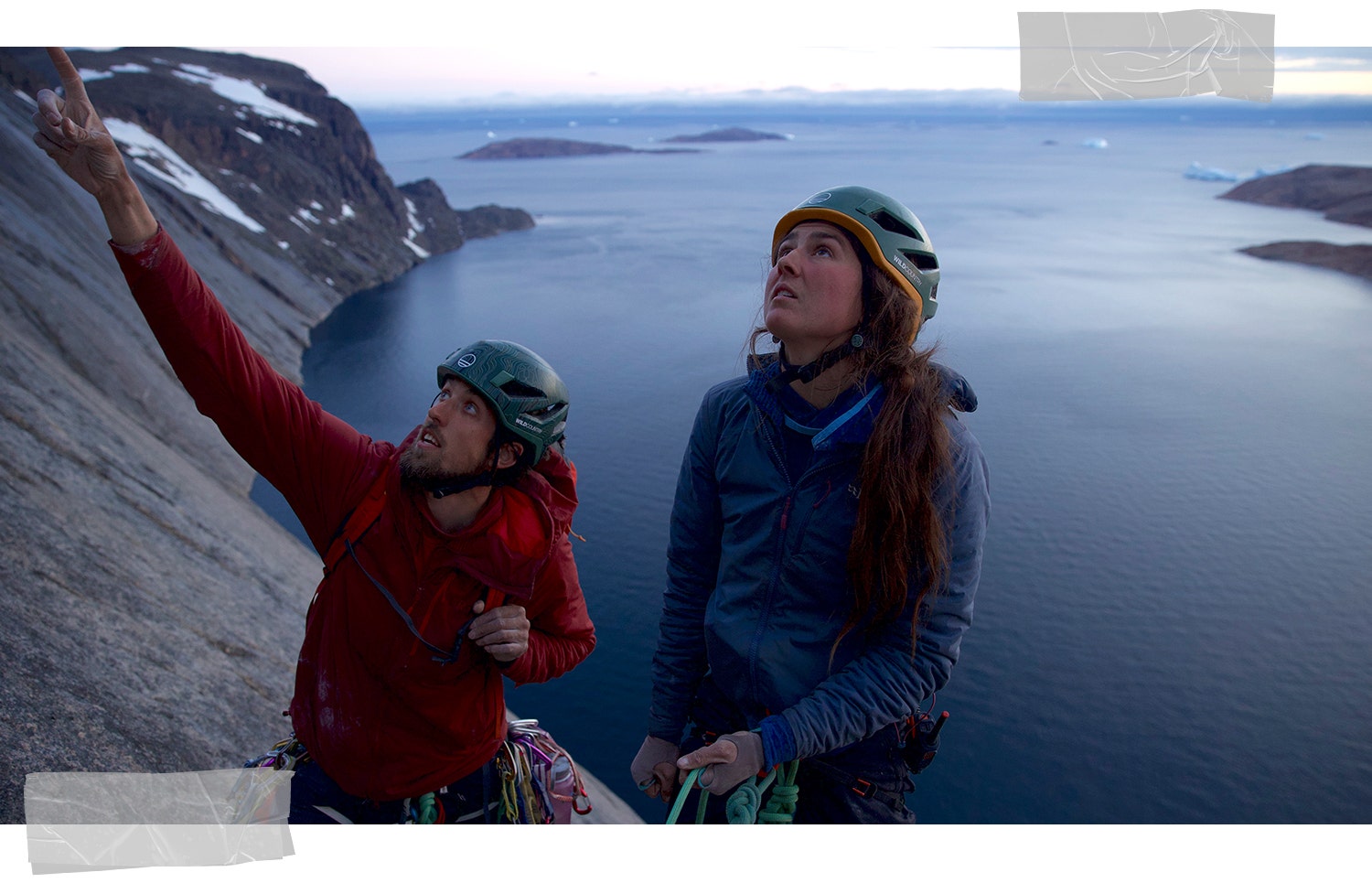

SANDERSON'S HOPE
Sanderson’s Hope, or Qaersorsuaq in the local tongue, was unmistakably the biggest and best piece of granite we’d witnessed on the entire 400km journey. It rises straight out of the Arctic Ocean, a clean bullet-hard slab 900m tall. We floated at the base in awe, staring up at the El Cap of Greenland, the climber’s jackpot. The cliff had been aid climbed twice in the past, by another Canadian team and an Italian team, but had yet to see a free ascent. That was the ultimate dream.
Our primary goal was to go vertical camping all six of us on an epic sea cliff in Greenland. If we managed to all stand together on the summit that would be incredible. Doing this via a new route after free climbing the whole face, well, I always say let yourself dream big!
Camping across from the wall, we studied the cliff and chose a line — an aesthetic, nearly continuous crack system from sea to summit, with a couple of seemingly blank sections to add to the suspense. We spent the following week, in two teams of three, climbing the first half of the wall, leaving ropes fixed in place and then jugging loads up the ropes to establish a high wall camp.
The climbing on the first half of the face was absolutely incredible! Beautiful granite splitters, with perfect footholds and crimps wherever the cracks ran out. Truly unbelievable!!! Plus camping up there was sure going to be wild.
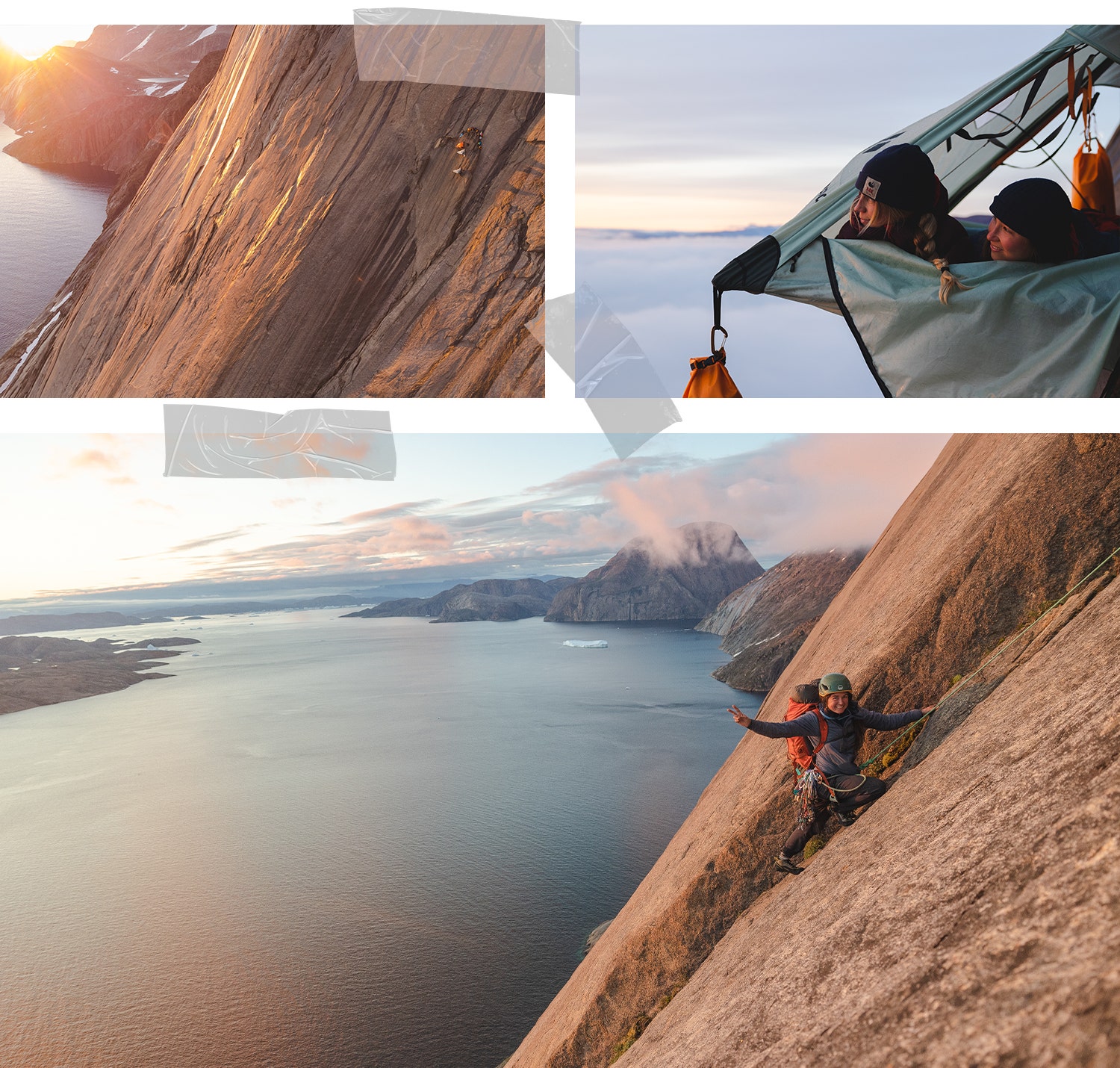

COMMITMENT
With our high camp stocked with ten days of food and water for six people, it was time to commit to the wall. We jugged up our fixed lines with a final load and pulled the rope up with us to use for tackling the top half of the mountain. Spirits were high, it felt like we’d been working up to this moment for a month and a half… actually for a year if you include all the prep!
But we were also nervous. A storm was predicted to roll in that evening, and the weather forecasts seemed continuously variable and unstable after that. It was also getting pretty cold now as we entered into the second half of August; winter wasn’t far off. We just needed the snow to hold out one more week to give us a chance at pulling this off. Or least to have a good crack at it! But it all seemed so uncertain.
Arriving at the ledge camp however, the evening sun was still shining bright! Zack, Kelsey and Angela pushed on and managed to get the ropes fixed three pitches higher. Psych was high as we snuggled into our hanging bubbles, two peas to a pod.
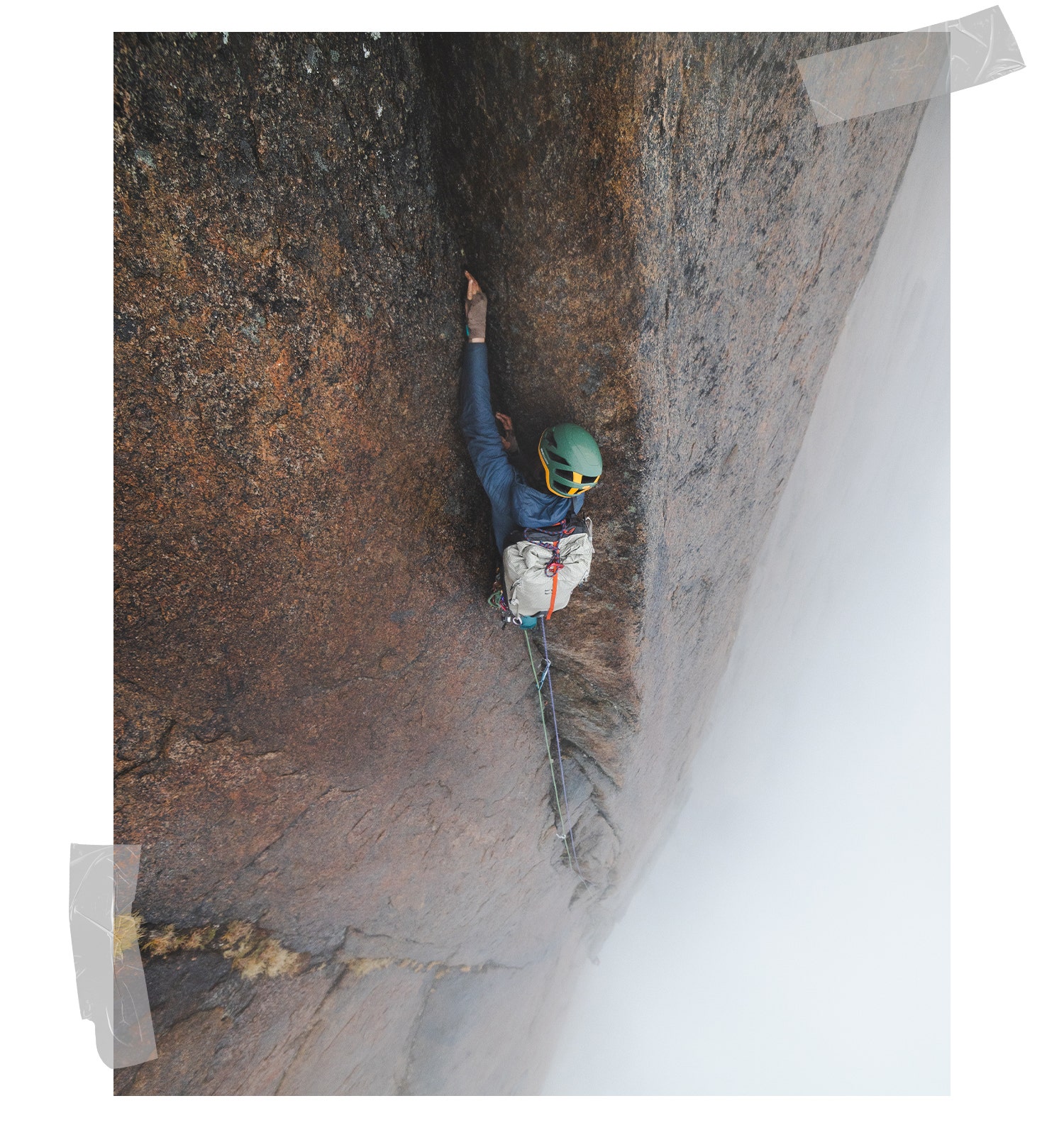

WASHED OUT DREAMS
Sure enough, the rain started in the early hours… and continued all day and all the next night. Jacob coined the slogan “Wet rock, wet camp, wet life.” The good news: we were able to collect more water to add to our stash! The bad news: our route had become a waterfall.
The fourth day we woke to a camp completely engulfed in a thick wet cloud. But, as Jacob pointed out, it wasn’t actively raining. In fact, as we ate breakfast we could even see some thinning patches that revealed the ocean and icebergs far below. Could it be clearing?
Thinking this might be our only chance, and perhaps guided by blissful optimism, we racked up, and started climbing. Jacob lead the train up a long beautiful crack with a 5.11 stemming crux. I lead the second team, but as I started I could feel the temperature dropping and the clouds closing in.
As I climbed higher it started to snow. My numb fingers dug dirt out of the cracks with my nut tool. I pasted my feet onto the soaking rock, willing the friction of the granite crystals to hold me on. Thick fluffy snow flakes were now falling all around me. I grunted as I started into the crux, weirdly enjoying the experience. When do you get to climb a mega pitch of granite cracks 700m above the arctic ocean in a full on snow storm!? It was certainly atmospheric. I let out a sigh of satisfaction as I pulled over the small roof at the end of the crux, amazed that I hadn’t slipped off.
I arrived at the anchor and we all bailed back to camp, to sit once more in our claustrophobic portages through another two days of cold rain. Our dream of making it to the summit seemed to be slipping away, like the water running down the rock and out to sea.
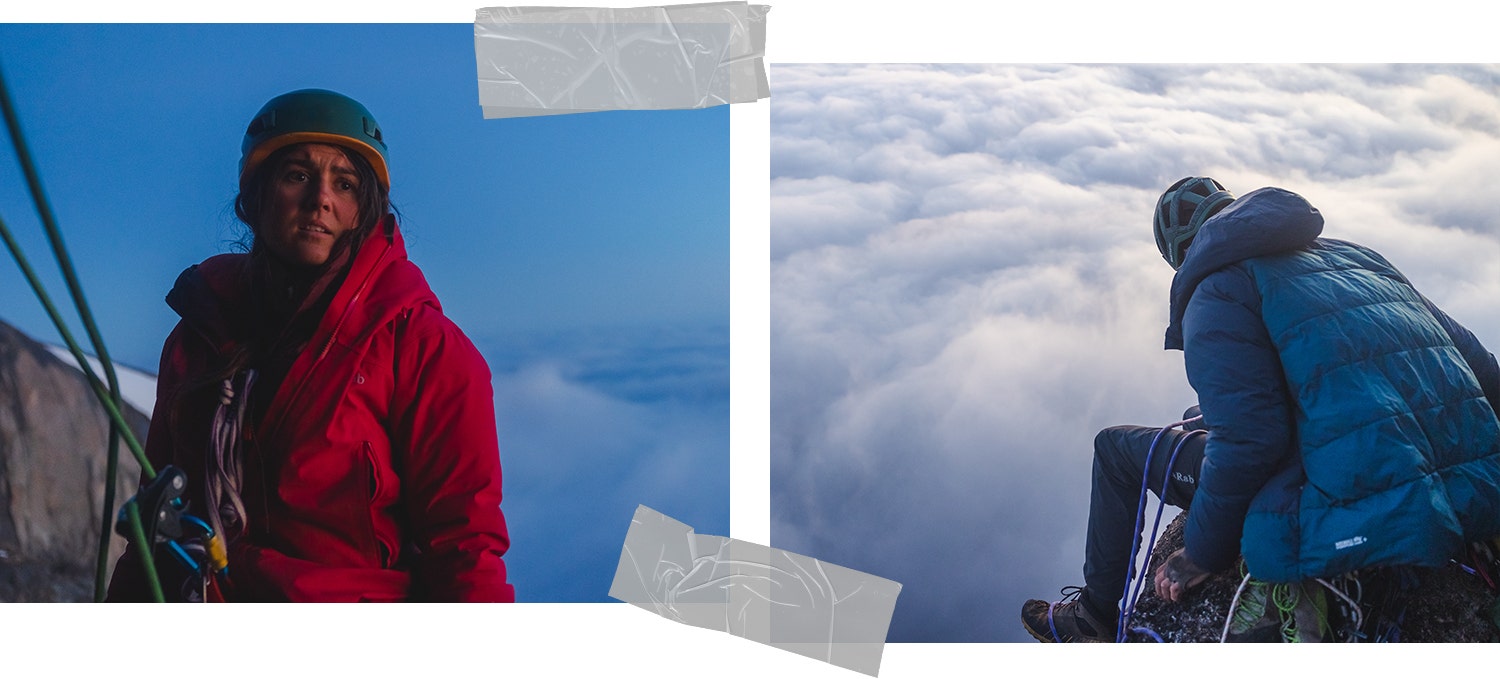

BREAK FOR THE SUMMIT
We woke in a thick white blanket, a scene we were unfortunately getting accustomed to. But the rain had stopped. Was this another trap? Four days of snow/rain had seeped into our tents and down to our bones. Everything was at least a little damp, many things were soaked. Camp was a pretty cold and miserable place.
“I’m going climbing” Jacob announced. We all looked up in shock. Are you serious? He was.
Kelsey, Jacob and I racked up. I had low expectations, but I couldn’t argue a good reason not to at least try. We had nothing to lose! Except for spending the next several hours hanging uncomfortably shivering at belays or squirming up muddy wet cracks with numb fingers and toes… What could possibly go wrong?
Jacob lead two pitches, shouting and power screaming as he fought with the wet slimy rock that was constantly trying to eject him. Kelsey and I followed, with equally as much struggle. But then, something incredible happened. At the top of the second pitch we popped through the clouds. Suddenly we were looking down on a cloud inversion and the sun above was shining directly on our faces. What a miracle! It’s sunny up here! We hooted and hollered in amazement and disbelief!
We radioed down to the guys at camp. “Get your climbing stuff together and start jugging the ropes! The sun is shining up here and we’re going to the summit!!!”
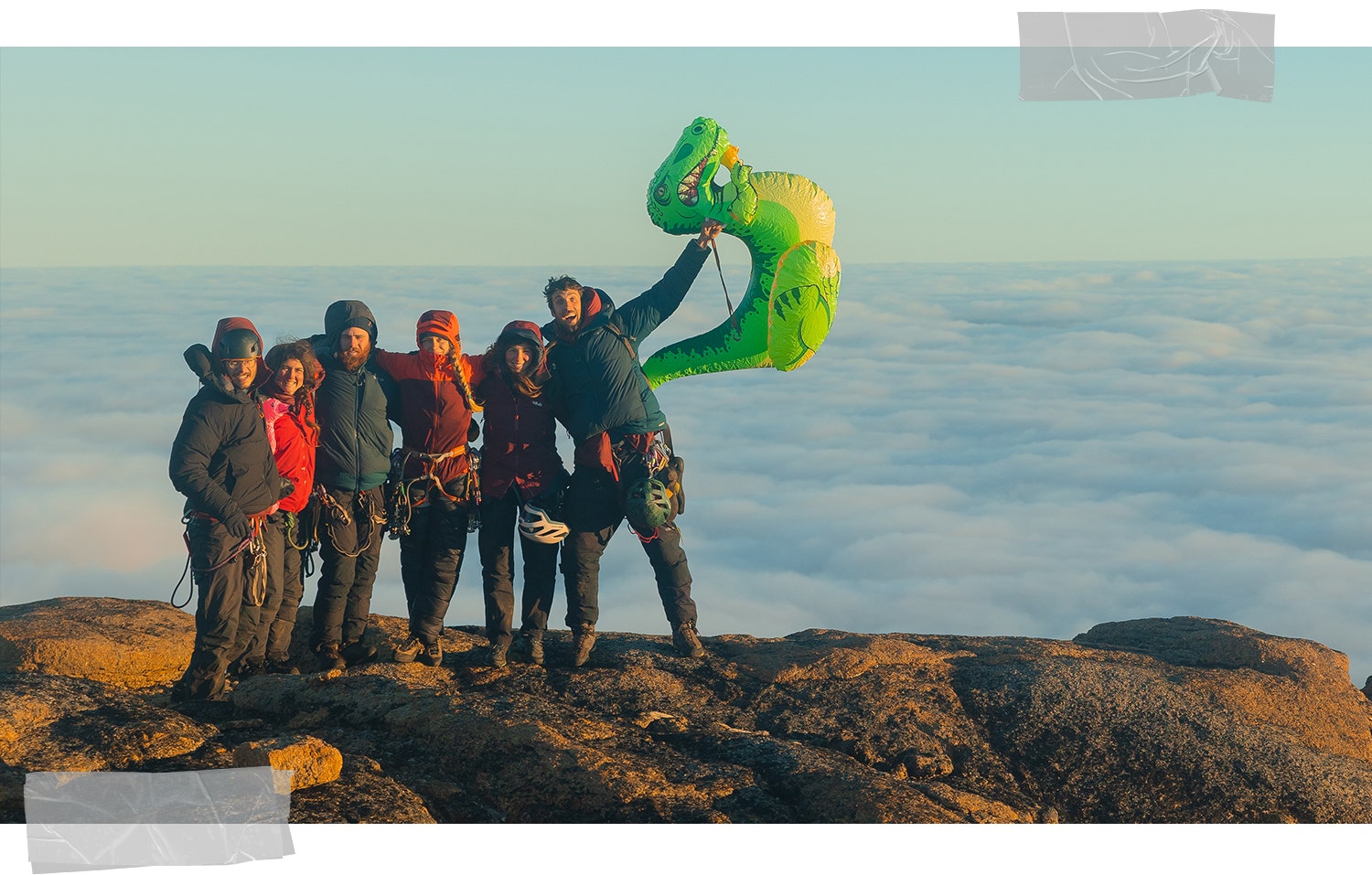

SUCCESS
An hour or so later, Jaron, Zack and Angela joined us above the clouds. I could only compare the experience to popping through the cloud layer when taking off in an airplane. We could see the top of the cliff, all of a sudden it was so close to our reach! With psych through the roof, we climbed all six of us up the remaining pitches to the top.
The final pitch may possibly have been the best of them all: a 5.11+ steep hand crack with 900m of air beneath your feet! The rock was dry, and our smiles were beaming as much as the rays of sunlight. We pulled onto the flat top out, untied from the ropes and practically ran and skipped to the true summit of the formation.
A full panorama view of mountains and ice cap to the west and ocean and icebergs to the east, with never-ending granite cliffs lining the coastlines to the south and north. I stood there, head swiveling trying to take it all in, trying to form a detailed mental image to keep this moment forever ingrained in my memory.
We all scrambled to the tippy top rock pile that was the highest point, and came in for a big group bear hug. What a trip! What a friggin’ mission that was. And to think this morning waking up in our miserably wet wall camp, that we would be here now all standing on the summit under the blazing sun.
I felt overwhelmingly proud of our team of friends. Setting off on a huge trip like this, the only thing one can be sure of is that one can’t be sure of anything at all! However, hurdle after hurdle, here we were, having managed to pull off just exactly the ambitious goal we had set out to try to do. It certainly had not all gone according to plan, but somehow we had come together and pulled it off. And so, with hearts and souls full, we finally turned our heads to the north, and knew deep inside that it was time to begin our journey home.
Quote style, bold, italic, 20px over 28px
Shop The Kitlist
Bronwyn is a professional rock climber and guide, based out of Squamish, Canada. Originally from rural Ontario, she grew up canoeing, hiking and skiing with her family. She started climbing at university and immediately fell in love with the sport.
Read more about Bronwyn here

